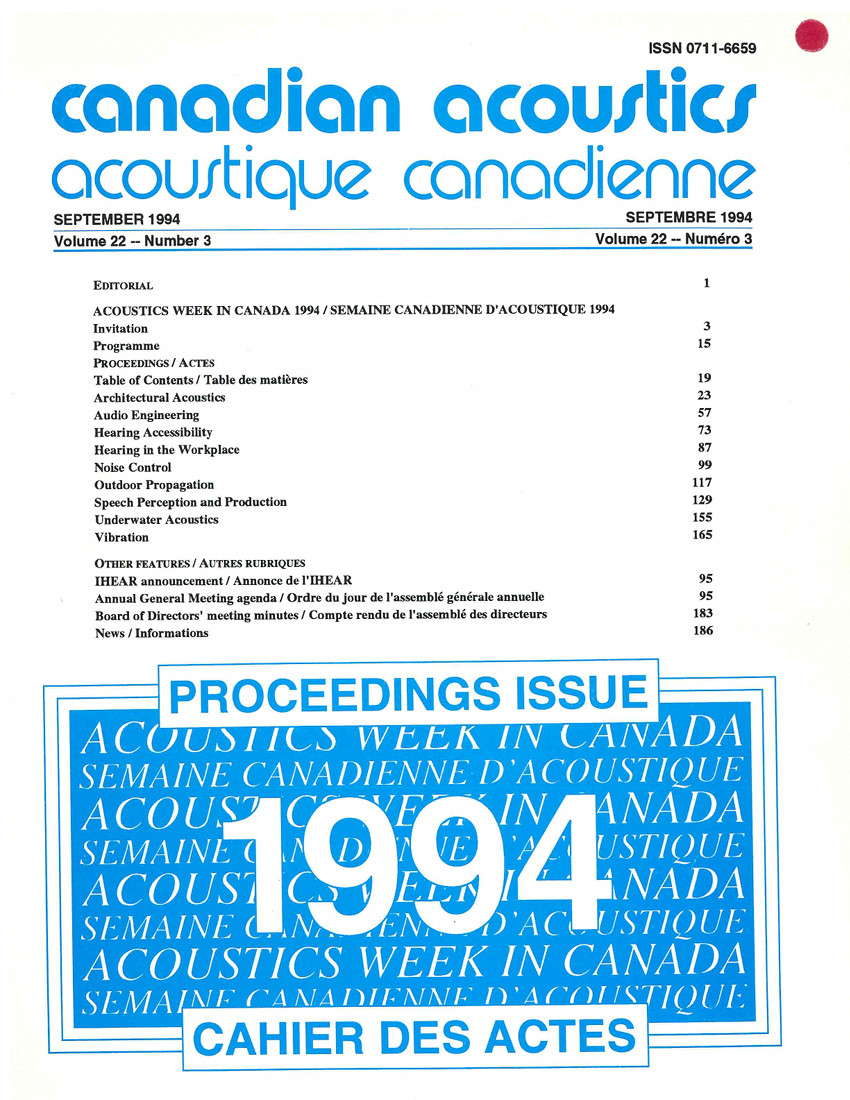Comparison of room impulse response measurement methods
Keywords:
acoustic variables measurement, architectural acoustics, room impulse response measurement methods, room acoustics, reverberation times, broadband signals, short duration sine sweep, post-processing, pseudorandom noise, maximum-length sequence signal, Fast Hadamard transformAbstract
One of the most important measures of a system such as a room is impulse response. Almost all characteristics of that system can be calculated directly from the impulse response, i.e. in room acoustics numerous objective parameters such as reverberation time, early/late ratios and RASTI can all be obtained from it. In room acoustics, due to large reverberation times, longer impulse responses are needed and a large dynamic is desired. The impulse response of a system is defined as the output when a perfect pulse, or delta function, is applied to it. Hence, the simplest of all techniques is just to apply a short duration pulse to the room and then measure its response. Other broadband signals can be used, with various processing, to calculate the impulse response. One example is the use of a chirp, a short duration sine sweep. This approach has more energy output than a pulse, but requires post-processing. If one stretches out the chirp so that it is a continuous repeating sweep, even more energy is output, and this requires similar post-processing. Finally, a pseudorandom noise, or a maximum-length sequence signal, with a Fast Hadamard transform can be used, to calculate the impulse response. For all of these techniques to be valid, the system under study must be linear and time invariant (except with the pulse method where time invariant is not a problem). This paper compares each of these approaches, and describes the strengths and weaknesses of them when applied to room acousticsAdditional Files
Published
How to Cite
Issue
Section
License
Author Licensing Addendum
This Licensing Addendum ("Addendum") is entered into between the undersigned Author(s) and Canadian Acoustics journal published by the Canadian Acoustical Association (hereinafter referred to as the "Publisher"). The Author(s) and the Publisher agree as follows:
-
Retained Rights: The Author(s) retain(s) the following rights:
- The right to reproduce, distribute, and publicly display the Work on the Author's personal website or the website of the Author's institution.
- The right to use the Work in the Author's teaching activities and presentations.
- The right to include the Work in a compilation for the Author's personal use, not for sale.
-
Grant of License: The Author(s) grant(s) to the Publisher a worldwide exclusive license to publish, reproduce, distribute, and display the Work in Canadian Acoustics and any other formats and media deemed appropriate by the Publisher.
-
Attribution: The Publisher agrees to include proper attribution to the Author(s) in all publications and reproductions of the Work.
-
No Conflict: This Addendum is intended to be in harmony with, and not in conflict with, the terms and conditions of the original agreement entered into between the Author(s) and the Publisher.
-
Copyright Clause: Copyright on articles is held by the Author(s). The corresponding Author has the right to grant on behalf of all Authors and does grant on behalf of all Authors, a worldwide exclusive license to the Publisher and its licensees in perpetuity, in all forms, formats, and media (whether known now or created in the future), including but not limited to the rights to publish, reproduce, distribute, display, store, translate, create adaptations, reprints, include within collections, and create summaries, extracts, and/or abstracts of the Contribution.


